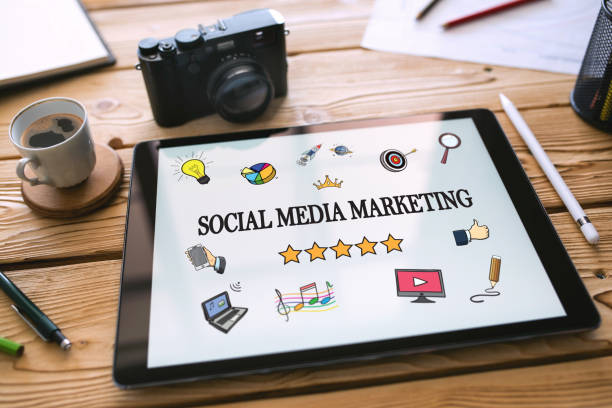Social Media Marketing: What It Is, How It Works, Pros and Cons
5 min read
Social media marketing is all the rage these days. More and more companies are turning to it in order to connect with their customers and drive traffic to their websites. So what is social media marketing, exactly? In a nutshell, social media marketing is the use of social media platforms (Facebook, Twitter, Google+, etc.) to create and deliver content that connects with people on an interpersonal level. This content can be anything from blog posts to photos to videos. However, social media marketing does have its drawbacks as well; for example, it can be difficult to measure the effectiveness of your campaigns. Ultimately, it’s up to you whether or not you decide to take advantage of social media marketing opportunities.
What is Social Media Marketing?
Social media marketing is the use of online platforms like Facebook, Twitter, LinkedIn, and Google + to create and/or maintain relationships with customers and followers. The goal of social media marketing is to connect with customers on an individual level and create a connection where they will return again and again.

Here are some tips for choosing the right social media platform:
- Do your research. Don’t just pick the first platform you find. Know what each platform can do for your business, and which ones have the features you need.
- Plan ahead. Make sure you have a strategy in place before starting to use social media platforms. This includes deciding what content you want to share, setting up scheduled posts, and creating engaging profiles that will attract followers.
- Monitor your social media accounts regularly. Like any other online activity, effective social media marketing requires regular effort and attention to keep things running smoothly.
How Social Media Marketing Works
Social media is the practice of using social media platforms like Facebook, Twitter, and LinkedIn to reach and engage with potential customers or followers. Social media marketing can be done either proactively (before you have any customers) or reactively (after you’ve already acquired a customer).
Proactive social media involves planning ahead and building a strategy around what you want to achieve. You’ll want to consider your target audience. The channels through which you want to reach them, and the message you want to send.
Reactive social media is all about reacting to what your audience says and doing something about it. This means that you’ll be monitoring your social media channels constantly in order to see what’s happening and then responding accordingly.
Proactive social media can be more effective because it allows you to plan your message better and focuses on building relationships with your target audience. Reactive social media can be more engaging because it makes it easy for you to respond quickly to what your audience is saying. However, reactive social media can also be less effective if you don’t have a good strategy or if your response isn’t appropriate for the situation.
What are the types of Social Media Marketing?
There are many types of social media marketing. Each with its own benefits and drawbacks. Here’s a look at the most common techniques:
- Facebook Marketing: Facebook is the world’s largest social media platform with 1.59 billion active users as of February 2016. It allows you to connect with friends, family, and other people you know who are also using the site. You can share updates about your business or brand. And encourage people to follow you and “like” your page in order to continue receiving updates from you.
- Twitter Marketing: Twitter has 271 million active users worldwide as of February 2016. You can use it to promote your brand or business by sharing brief updates (up to 140 characters long) about current events, products, services, and more. These updates can be targeted specifically to a certain audience through retweets (a simple way to share another user’s tweet) or using hashtags (#).
- LinkedIn Marketing: LinkedIn is one of the oldest social networks on the internet and boasts over 200 million members worldwide as of February 2016. You can use it to build relationships with influential individuals in your industry or niche. And then sell them products or services via email campaigns or push notifications (notifications sent directly to LinkedIn users’ phones).
- Instagram Marketing: Instagram is a popular photo-sharing site that has 50 million active users as of February 2016. You can use it to promote your brand or business by sharing photos that showcase your products or services. As well as photos of your customers and employees. You can also create mini-documentaries and create custom hashtags (#) to help promote your content.
- Snapchat Marketing: Snapchat is a mobile app that allows users to share short videos ( Snapchats) with friends. These videos disappear after seconds, making them ideal for promoting quick updates about your business or brand. You can also use Snapchats to create “Lenses” – interactive filters that add fun and personality to your videos.
The Benefits of Social Media Marketing
Social media is the process of using online platforms like Facebook, Twitter, and LinkedIn to create and share content that engages customers and leads to sales or leads.
There are many benefits to social media, including:
– Increased brand awareness
– Better customer relationships
– Improved customer retention
– Increased sales and leads
– Improved customer service
– More engaged employees
– More informed customers
The Risks of Social Media Marketing
The risks of social media are real and should be taken into account before embarking on a marketing campaign. Social media platforms are extremely user-friendly, but that also means they’re vulnerable to scams and cybercrime.
If your social media platform is hacked, your personal information (including passwords) could be compromised. Additionally, if you post sensitive or confidential information online. It can easily be stolen and used to embarrass or harm you.
Another risk of using social media is that it can be addicting. It can be difficult to keep up with all the different posts and comments, and if you don’t have a tightly controlled plan for how you’ll use social media, it can quickly become a source of distraction from your business goals.
Conclusion
Social media is the use of digital platforms like Facebook, Twitter, and LinkedIn to create and manage relationships with potential and current customers. It allows small businesses to connect with their target market in a way that was never possible before. While there are many pros to social media, it can also be risky if not done correctly. If you’re looking for tips on how to get started with social media. Be sure to check out our blog post here!

I am passionate blogger, I have started at the smallest possible stage in the publishing industry, our humble beginnings keeps all our internal stakeholders in check. Hard work and an undying passion for delivering the best quality of content possible are what drives us to take on publishing every single day, and we are not about to quit on this rewarding ethic.








